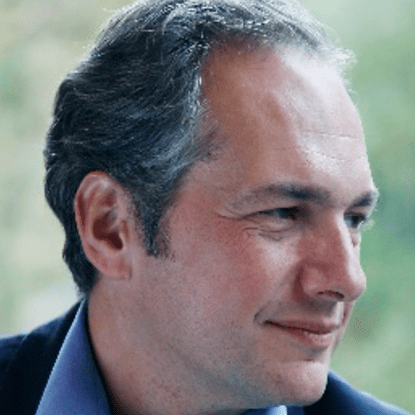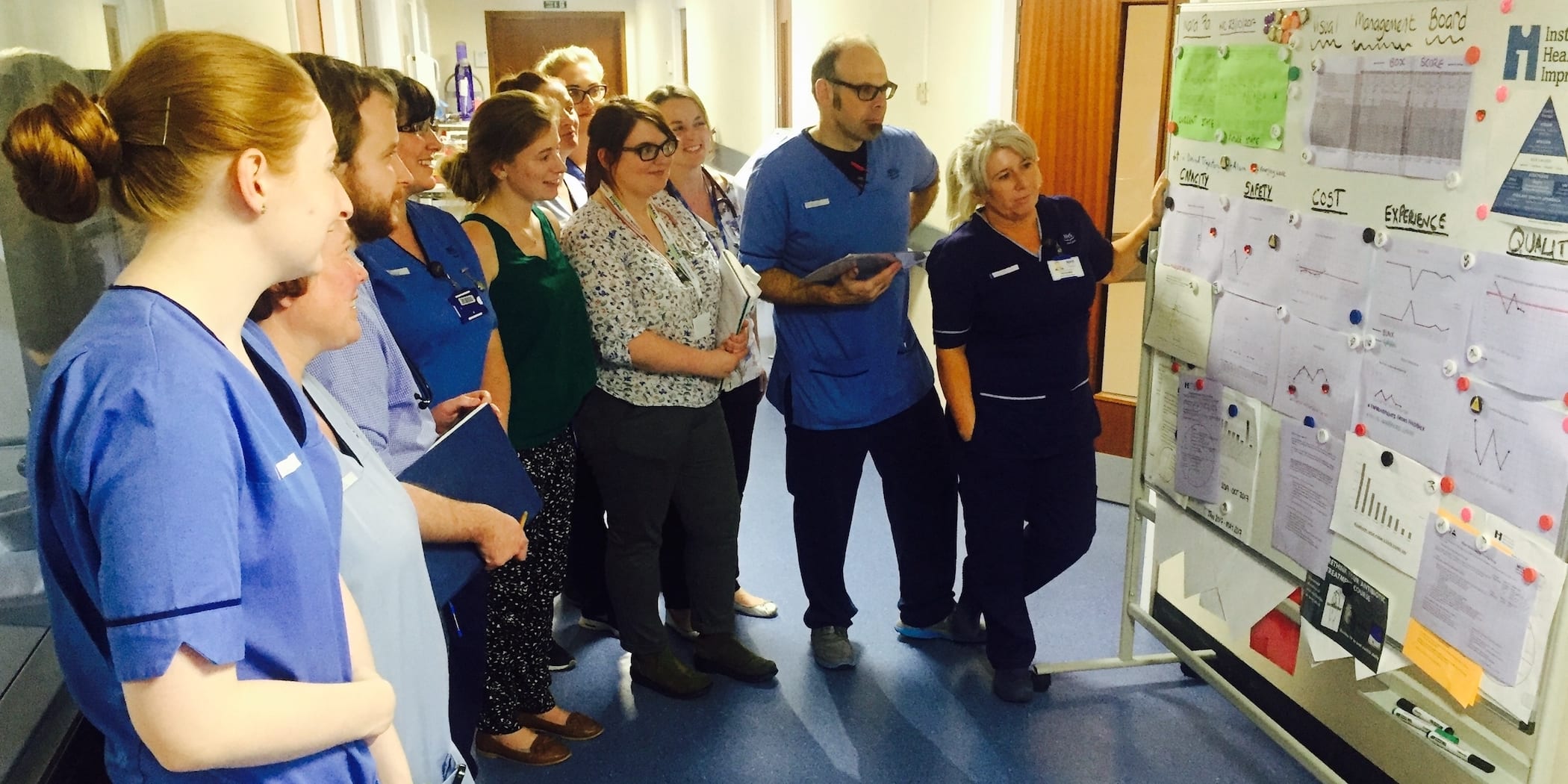
From kaizen to innovation
FEATURE – Innovation is a process and lean thinking allows that process to take place, by empowering everyone in the company to think creatively about solving customer problems.
Words: Michael Ballé, lean author, executive coach and co-founder of Institut Lean France, Fabiano Clerico, CEO of Tokheim Service Group, and Furio Clerico, COO of Tokheim Service Group.
We started our lean transformation by fixing the supply of spare parts for our technicians – there was no sillier waste for them than to drive all the way to a gas station and find they didn’t have the right parts to do the maintenance job. Giuseppe has used the work on parts procurement to offer a new supply service to our customers, who can now ask us for any part they need.
When the oil companies moved out of the gas station business in Italy, we lost all the main contracts our business depended on. We turned our attention from managing contracts with the purchasing department of large firms to listening to the specific needs of small station owners. Tommaso and Gianpietro ran with this idea and entirely rebuilt a business out of offering maintenance services to independent service stations. This has led Tommaso to develop a phone App to reach out to station managers, which is opening up completely unforeseen opportunities for us at TSG.
Working to reduce unnecessary mileage – the biggest waste in our business (the technician has to get on station) – has first led us to develop flexibility (an electrical expert can learn to change a filter) and then to study more deeply dispatch routes. This, in turn, has led us to look into traffic analysis, which customers have found interesting, and we are now asked for reports on driver behavior and station positioning optimization.
When we started lean, we believed that innovation was slow in our business – what can possibly happen with selling gasoline dispensers and offering refuel station maintenance? We also thought that, in order to make a small profit, we needed to better control all aspects of doing the work. Years later, we’re experiencing double-digit profitable growth, and the number of innovative projects in the company is actually growing out of hand.
How is such change possible?
When we first started lean, we saw it as a process improvement methodology. Since it clearly can’t ever be good to send a technician on a station to do the work with the wrong information or material, we through we needed to improve our dispatch process to eliminate that waste. And we did.
We mapped the process, we looked into the daily problems technicians and dispatchers encountered. We monitored the speed and precision of parts supply to the technicians. We thought that if we could solve every problem we could develop better standards and require greater compliance from our people to make the process perform better.
What we found every time we looked closer into an issue was that our people surprised us. First, they knew the reality of the process much better than we did, and what was really happening was never quite what we thought. Secondly, they had unexpected insights and took surprising initiatives that made things better without necessarily fixing the process the way we thought: they made changes.
The lean tools gave us a framework to map our the existing processes, look for specific gains, explain the imagined changes, get them tested and verified and then shared across the company. But a framework is not all. It doesn’t explain the smart ideas people came up with.
We came to realize that rather than use people’s heads to solve process problems, we could use process problems as a development opportunity – and then people would surprise us – which they did, repeatedly.
At first, we used kaizen initiatives to support the business (we were in such desperate trouble). But we then realized that if we followed through with the kaizen ideas and gave them top management support, we could often discover completely unsought-for growth opportunities.
Human minds are good for more than error correction. They’re also excellent at spotting opportunities and coming up with creative solutions. The main difficulty, though, is that a new idea or solution is rarely born all nice and pretty with a ribbon on top. We found that a new idea is more like a messy, dicey ugly duckling. It’s hashed out and cobbled together out of the material at hand. It needs support and support to fully bloom and turn into a new opportunity. As long as we looked for complete and fully scalable ideas, we never realized the wealth of opportunities we were missing.
We believed that we knew the business inside out (we’ve been doing this all our lives) and that we had some specific problems to solve – lean should help with that. Then we realized we needed to establish kaizen everywhere to develop people’s ability to cope with unexpected situations and serve customers well in a cost-effective manner. Finally, now we understand that what lean really allows us to do is create a culture of innovators.
Innovators, in our sense, are not blue-sky thinkers that dream up sci-fi solutions. That would be risible in such a pragmatic business as ours. Innovators are people who first know how to do the job and understand the issues they need to work on to make success repeatable.
Having high standards for a role means understanding what needs to be repeatable day in, day out, and what are the ongoing problems one has to solve to make that happen. For instance, in our business, there is not one day when the time technicians spend in their car going from station to station is not time wasted both for them and the company. So, we list the reasons for the trip, and try to work on these problems. Our maintenance center managers are first expected to manage this well.
They’re also expected to carry out kaizen to either solve emerging problems or look for concrete gains by eliminating obvious wastes. Every team leader in the company has his or her own kaizen project to carry through.
Innovators are the people who, out of repeating the same kaizen effort on a given topic, start seeing how the whole thing could be done differently – like Tommaso did when he realized that we didn’t need to fully train electricians to become mechanics, and that narrowing down on a few operations such as changing the filters or the nozzle was enough to reduce overall travel by 20%. As he took charge of three geographical areas for the company, he could build on this insight to develop a new competence and cross-training system.
By getting innovative people to work together, we can see that the company is transforming at an amazing rate. Bringing together innovators on specific challenges yields surprising results, which is how we find ourselves in the midst of a fully digital transformation in the most traditional of industries.
As a leader it is incredibly hard to let go of the idea that you understand everything, can figure out all the answers and need to surround yourself with people who will take your commands and “make it so”. It was humbling to realize that, when asked, our people understood the situation better than we did, and that when we shared with them the fuller picture, the challenges and intents, they could come up with totally overlooked, creative ideas.
As we changed our understanding of roles from:
JOB = WORK
To
JOB = WORK + KAIZEN
we realized that some people took it further to:
JOB = WORK + KAIZEN + INNOVATION.
We also learned that those who suggested “innovations” without going through the kaizen effort were usually side-stepping one of their problems through investment and pushing the issue on to someone else.
Spotting innovative thinkers and connecting them has now become our main priority. Lean gives us a system to continuously develop everyone, and we try to promote the people that come up with the most unexpected and efficient ways to solve concrete problems. In this sense, we now see lean, with all its technical tools, as essentially a talent management system. Talent spotting occurs during problem solving and kaizen. We’ve learned that, as leaders, our role is to challenge (to get the thinking going) and support (to give people the means to try and test their ideas). This insight has radically changed our approach to leading the company.
Like most business leaders, we believed that innovation was a matter of looking at what the market was doing, identifying our knowledge gaps, purchasing the capability through either hiring knowledgeable people or purchasing systems and then offering the service to customers. We now realize that such an approach can only make you average, as everyone is doing the same, and is terribly costly.
We now see innovation as solving problems for our customers and ourselves by identifying key wastes and asking people to think creatively about how to eliminate them. These kaizen efforts have led us to develop internal solutions that can be ironed out from a jury-rigged idea to a working internal system. When our customers see that some of our solutions could apply to their own problems and that we work with them daily, they ask for them – at which stage we have to scratch our heads on how to deliver and what we need to push further to make it a customer offer, which is how our innovative services are born.
People are people. They have moods, quirks, chips on their shoulders and bees in their bonnets. In the CEO or COO job, its easy to start believing that people are the problem: they never work hard enough or do what they’re asked for well enough. What conducting systematic kaizen has taught us is how much people are really the solution. Yes, every day has its share of new “people problems” – but that’s the job of management. What we have learned is to also look for “people solutions” – insightful ideas and ingenious initiatives.
As we clarify to all the challenges the company faces and our theories about these challenges, people solve problems and suggest next steps – it’s then our job to nurture and encourage, as well as make sure the idea makes sense and it will fly.
Innovation, we now know, is not an event – it’s a process. Managing for innovation doesn’t mean being innovative yourself, but developing innovative people and getting them to work together. Having a structured system to do so is, in itself, the true innovation of lean.
THE AUTHORS



Read more


SERIES – The authors discuss the fourth of six elements in their 6CON process development model – CONfigure – refining the selected process concept to maximize value-added activities.


FEATURE – An approach based on coaching and experiments is transforming the way restaurant chain Xibei works with its people to improve service and dishes: the story of Chef Liang and his Kongfu fish.


FEATURE – Why do lean transformations benefit from the support of a sensei? Michael Ballé discusses how we typically need help to take the emotions out of the work and go down uncomfortable paths.


INTERVIEW – The CEO of a Scottish health board takes us through the organization’s long lean journey, reminding us that allowing people to take the initiative often leads to the most impressive discoveries.

